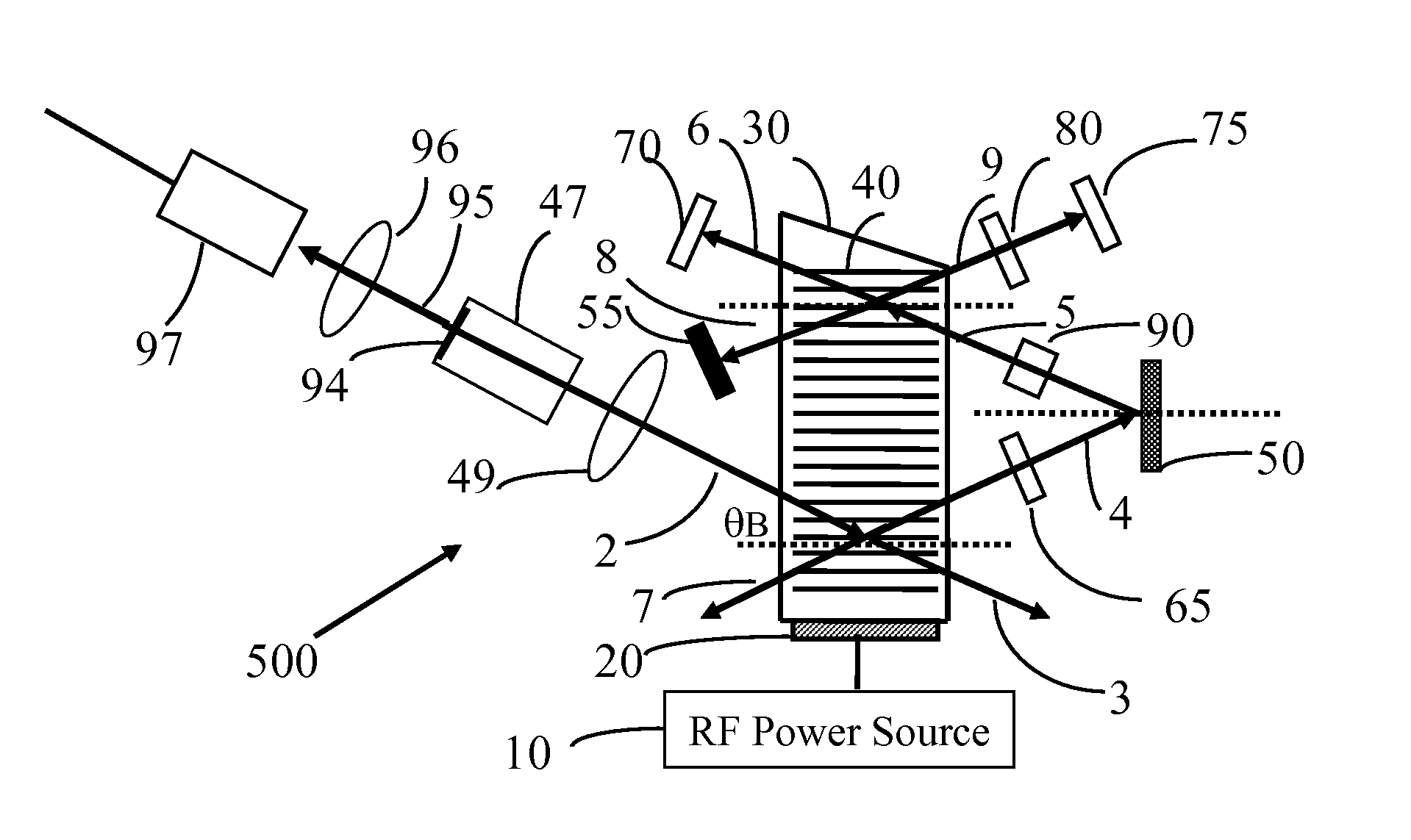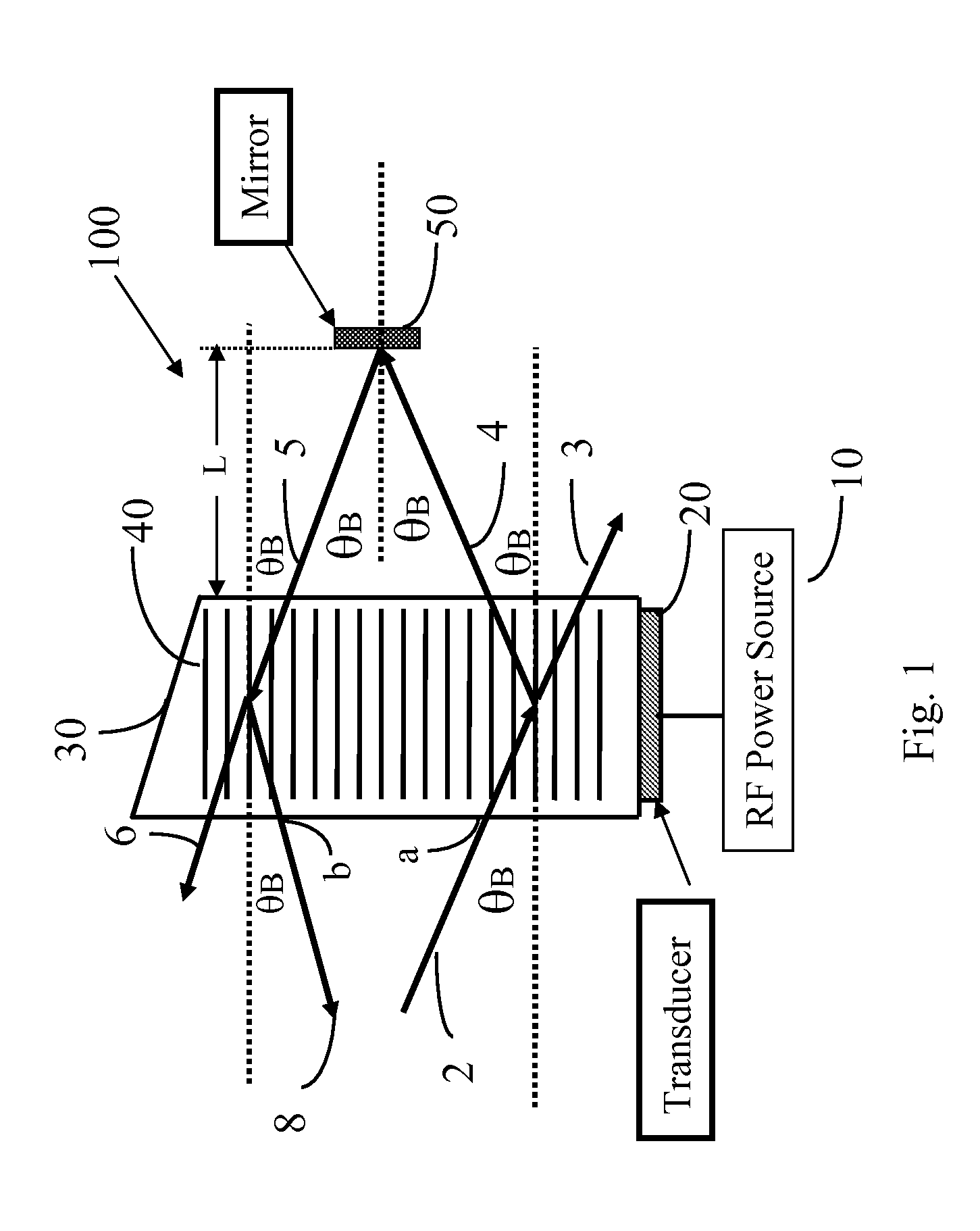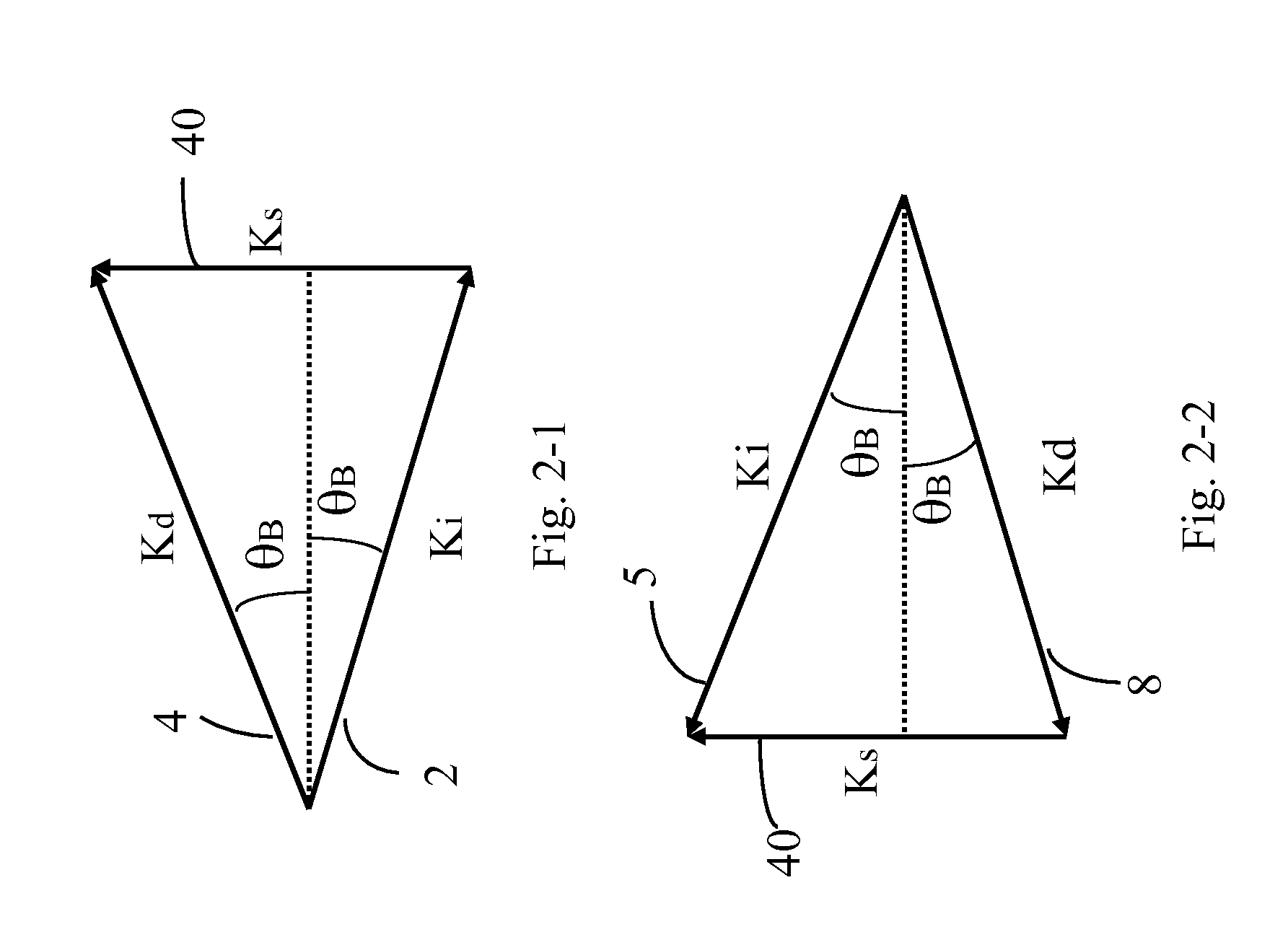Tunable laser system
a laser system and tunable technology, applied in the direction of laser details, semiconductor lasers, instruments, etc., can solve the problems of inability to meet the requirements of optical telecom applications, inability to use tunable lasers employing moving parts, and inability to market penetration of tunable lasers, etc., to achieve easy assembly, reduce space, and achieve wavelength accuracy and stability
- Summary
- Abstract
- Description
- Claims
- Application Information
AI Technical Summary
Benefits of technology
Problems solved by technology
Method used
Image
Examples
Embodiment Construction
[0027]FIG. 1 shows, one embodiment of a compact, frequency-shift compensated, wavelength tunable optical filter. The embodiment 100 includes a medium 30, an acoustical transducer 20, and radio frequency (RF) power source 10, and an optical mirror 50.
[0028]There are two basic types of tunable acousto-optic filters, collinear type and noncollinear type. The noncollinear type includes the isotropic Bragg diffraction type and far-off-axis anisotropic Bragg diffraction type. The far-off-axis anisotropic Bragg diffraction has more practical value due to its narrow tuning bandwidth such as discussed in several U.S. patents.
[0029]In one embodiment, the medium 30 is anisotropic and birefrigent, such as when narrow band tuning is desired. One such material, TeO2, operating in shear mode has been used extensively for such applications due to its high optical homogeneity, low light absorption, and high optical power capability.
[0030]Other materials such LiNbO3, CaMoO4 and PbMoO4, are also used ...
PUM
 Login to View More
Login to View More Abstract
Description
Claims
Application Information
 Login to View More
Login to View More - R&D
- Intellectual Property
- Life Sciences
- Materials
- Tech Scout
- Unparalleled Data Quality
- Higher Quality Content
- 60% Fewer Hallucinations
Browse by: Latest US Patents, China's latest patents, Technical Efficacy Thesaurus, Application Domain, Technology Topic, Popular Technical Reports.
© 2025 PatSnap. All rights reserved.Legal|Privacy policy|Modern Slavery Act Transparency Statement|Sitemap|About US| Contact US: help@patsnap.com



